However, the unique phenotypes associated with PAK6 deletion imply that additional specific PAK6 substrates remain to be discovered. The mode of regulation of PAK6 is thought to be similar to that previously identified for PAK4, but this has not been shown with a cognate PAK6 sequence. Furthermore, the impact of somatic, acquired cancer mutations in PAK6 has not been studied, and structural biology techniques to identify potential ways to specifically target dysregulated type II PAKs have not yet 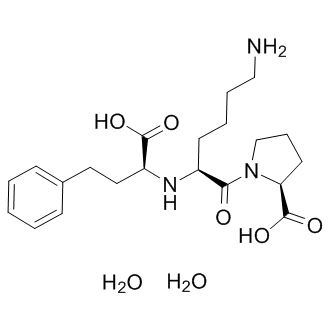 been successful. In this study we have addressed each of these specific questions regarding PAK6 signaling. We have conducted an investigation into the substrate specificity of PAK6. We find that PAK6 has an identical consensus phosphorylation site sequence to PAK4 and PAK5. While PAK5 and PAK6 appear to be partially redundant, they are thought to have functions distinct from PAK4. Given that these three kinases share the same phosphorylation consensus, it seems likely that targeting of specific downstream substrates involves interactions outside of the kinase active site, perhaps mediated by accessory proteins. As noted previously, the PAK5/PAK6 phosphorylation site in PACSIN1 conforms well to the type II PAK consensus sequence, having an Arg residue at the P-2 position, a Val residue at the P +1 position, and a Ser phosphoacceptor residue. By contrast, the sequence surrounding the PAK6 phosphorylation site in androgen receptor does not conform to the consensus, suggesting a role for non-active site interactions in directing phosphorylation of androgen receptor. The general type II PAK consensus is overall similar to the type I PAK consensus sequence as determined for PAK1 and PAK2. However, phosphorylation of PACSIN1 specifically by type II PAKs can be explained by phosphorylation site recognition by the kinase catalytic domain. These observations suggest that differences between type I and type II PAKs in their preferred phosphorylation site sequences are important for specific substrate targeting in vivo. We discovered that PAK6 is inhibited by its pseudosubstrate sequence. Our previous studies had shown that PAK6 could be inhibited by the PAK4 pseudosubstrate sequence, so our current study builds on our previous finding to show that the PAK6 pseudosubstrate sequence can inhibit its own kinase activity. We also find that a melanoma-associated mutation within the pseudosubstrate sequence, P52L, disrupts PAK6 autoinhibition enhancing its kinase activity, potentially correlating with increased expression of PAK6 in prostate cancer, and implied alterations in kinase activity. Establishing that this mutation impacts pseudosubstrate autoinhibition may facilitate future PAK6 studies. Finally, we determined two co-crystal structures of PAK6 in complex with ATP-competitive small molecule inhibitors. These co-crystal structures will facilitate an improved understanding of the modes of targeted inhibition for type II PAKs, and may aid future studies that aim to design inhibitors specific to each of the type II PAK family members. In sum, the current study provides significant advances in the understanding of the type II PAK family member, PAK6, and will facilitate future studies into PAK signaling and targeted drug development. With the global pandemic of diabetes affecting every continent, the impact of diabetic micro- and macro-vascular complications is far reaching. Central to all vascular complications is endothelial dysfunction. However, equally significant is the inability to repair dysfunctional endothelium. The process of repair is mediated largely by vascular progenitor populations. One such progenitor population, CD34+ cells are hematopoietic cells which Fingolimod Src-bcr-Abl inhibitor exhibit altered in vitro and in vivo function in individuals with vascular complications. CD34+ cells represent an ideal biomarker for the prediction of the cardiovascular disease, metabolic syndrome and type 2 diabetes. CD34+ cells function to provide paracrine support to AZ 960 905586-69-8 injured vasculature and tissues. Their reparative function has broad implications for supporting the health of an individual, and this has led to the use of these cells in clinical trials for treating ischemic conditions. Transient downregulation and functional inhibition of the intracellular TGF-��1 pathway in diabetic human CD34+ cells corrects key aspects of their dysfunctional behavior and this likely occurs through effects on critical TGF-��1 target genes. To this end, recent data confirms the role of one such TGF-��1-regulated gene, PAI-1, as an important mediator of cellular growth arrest.
been successful. In this study we have addressed each of these specific questions regarding PAK6 signaling. We have conducted an investigation into the substrate specificity of PAK6. We find that PAK6 has an identical consensus phosphorylation site sequence to PAK4 and PAK5. While PAK5 and PAK6 appear to be partially redundant, they are thought to have functions distinct from PAK4. Given that these three kinases share the same phosphorylation consensus, it seems likely that targeting of specific downstream substrates involves interactions outside of the kinase active site, perhaps mediated by accessory proteins. As noted previously, the PAK5/PAK6 phosphorylation site in PACSIN1 conforms well to the type II PAK consensus sequence, having an Arg residue at the P-2 position, a Val residue at the P +1 position, and a Ser phosphoacceptor residue. By contrast, the sequence surrounding the PAK6 phosphorylation site in androgen receptor does not conform to the consensus, suggesting a role for non-active site interactions in directing phosphorylation of androgen receptor. The general type II PAK consensus is overall similar to the type I PAK consensus sequence as determined for PAK1 and PAK2. However, phosphorylation of PACSIN1 specifically by type II PAKs can be explained by phosphorylation site recognition by the kinase catalytic domain. These observations suggest that differences between type I and type II PAKs in their preferred phosphorylation site sequences are important for specific substrate targeting in vivo. We discovered that PAK6 is inhibited by its pseudosubstrate sequence. Our previous studies had shown that PAK6 could be inhibited by the PAK4 pseudosubstrate sequence, so our current study builds on our previous finding to show that the PAK6 pseudosubstrate sequence can inhibit its own kinase activity. We also find that a melanoma-associated mutation within the pseudosubstrate sequence, P52L, disrupts PAK6 autoinhibition enhancing its kinase activity, potentially correlating with increased expression of PAK6 in prostate cancer, and implied alterations in kinase activity. Establishing that this mutation impacts pseudosubstrate autoinhibition may facilitate future PAK6 studies. Finally, we determined two co-crystal structures of PAK6 in complex with ATP-competitive small molecule inhibitors. These co-crystal structures will facilitate an improved understanding of the modes of targeted inhibition for type II PAKs, and may aid future studies that aim to design inhibitors specific to each of the type II PAK family members. In sum, the current study provides significant advances in the understanding of the type II PAK family member, PAK6, and will facilitate future studies into PAK signaling and targeted drug development. With the global pandemic of diabetes affecting every continent, the impact of diabetic micro- and macro-vascular complications is far reaching. Central to all vascular complications is endothelial dysfunction. However, equally significant is the inability to repair dysfunctional endothelium. The process of repair is mediated largely by vascular progenitor populations. One such progenitor population, CD34+ cells are hematopoietic cells which Fingolimod Src-bcr-Abl inhibitor exhibit altered in vitro and in vivo function in individuals with vascular complications. CD34+ cells represent an ideal biomarker for the prediction of the cardiovascular disease, metabolic syndrome and type 2 diabetes. CD34+ cells function to provide paracrine support to AZ 960 905586-69-8 injured vasculature and tissues. Their reparative function has broad implications for supporting the health of an individual, and this has led to the use of these cells in clinical trials for treating ischemic conditions. Transient downregulation and functional inhibition of the intracellular TGF-��1 pathway in diabetic human CD34+ cells corrects key aspects of their dysfunctional behavior and this likely occurs through effects on critical TGF-��1 target genes. To this end, recent data confirms the role of one such TGF-��1-regulated gene, PAI-1, as an important mediator of cellular growth arrest.
Month: July 2019
It has been observed that the benefits of intravenous delivery can be duplicated by using the skin as a portal
Second, overproduction of the DnaN target resulted in resistance towards the same peptides. We therefore consider it unlikely that the antimicrobial effect of these two peptides result from other and unspecific interactions with the bacterial cells. Peptides III-5, III-6 and III-7 had a somewhat limited activity in vivo with MIC values in the range of 20250 mg/ml. Since the peptides were all efficient in reducing DnaN-DnaN interaction when produced intracellularly the MIC values may at least in part reflect difficulties for the peptides in crossing the bacterial membrane. In agreement with this none of these peptides were particularly hydrophobic or cationic. At present we do not know how the isolated peptides enter the bacterial cell but given their physical/chemical nature, they are not likely to passively diffuse through the membrane, and a possibility is that they are actively taken up by one of the four oligopeptide permeases present in S. aureus cells. With over 25 million deaths attributed to AIDS since the first cases in 1981, 33 million individuals worldwide living with HIV, and over 2.5 million new infections yearly, HIV/AIDS continues to be a global emergency. To combat this epidemic, combinations of nucleoside, nucleotide and nonnucleoside reverse transcriptase inhibitors and protease inhibitors have been effectively used in highly NSC-718781 active anti-retroviral therapies to significantly reduce HIV virus load in infected individuals for prolonged periods of time. The utilization of HAART has dramatically changed the therapeutic landscape of HIV treatment and the application of cocktails of antiretroviral agents is now the standard of care for HIV patients. Currently over thirty antiviral therapies have been approved for use in HIV-infected patients. However, HAART still suffers from complications with the emergence of multi-drug resistant virus strains, toxicity, drug-drug interactions, difficult treatment regimens, and inadequate pharmacology. Thus, the prevailing belief is that the addition of new anti-HIV agents to HAART regimens will provide Axitinib customer reviews additional clinical benefit with the development of new anti-HIV strategies and therapies. Pyrimidinediones are highly potent, small molecule inhibitors that have a dual mechanism of action against HIV infection: viral entry inhibition and non-nucleoside reverse transcriptase inhibition. IQP-0410, as well as other highly potent PYD analogs, have shown sub-nanomolar concentration in vitro inhibitory activity as reverse transcriptase inhibitors and nanomolar concentration activity as virus entry inhibitors. However, one of the biggest obstacles to the administration of small molecule therapeutic products is bioavailability. For example, in studies with Zidovudine, the first anti-HIV compound approved for clinical use, the therapeutic effectiveness was significantly limited due to its dose-dependent hematological toxicity, low therapeutic index, and, short biological half-life. Additionally, due to first-pass metabolism, the oral bioavailability of AZT was low and the dosage required to maintain therapeutic levels often resulted in toxic concentrations in the blood and other side effects. Similar to other anti-HIV NNRTI��s, IQP-0410 is lipophilic, has low aqueous solubility, and is subject to an extensive first-pass metabolism, resulting in limited therapeutic effectiveness with oral administration. Therefore, non-oral delivery systems may be a means to effectively deliver such lipophilic drugs into the blood plasma and enhance pharmacokinetics. To overcome the described problems associated with conventional therapeutic drug delivery, controlled drug delivery through formulation is a technology generating significant interest for its ability to enhance the effective drug activity of an active pharmaceutical ingredient through the sustained biomechanical delivery of the API at a controlled rate over time. With conventional dosage forms, the release rate of a drug results in a ��peak and trough�� profile, where immediately following dosing there is a sharp increase in plasma drug concentration followed by a rapid drop to trough concentrations, which often may fall below effective therapeutic concentration levels. Long term systemic exposure to a drug at modest concentrations is believed to be more beneficial than a bolus supply of drug at higher concentrations. The 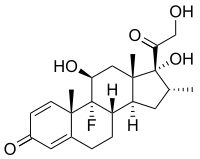 need to minimize drug concentration fluctuation has led to the development of controlled release drug delivery systems.
need to minimize drug concentration fluctuation has led to the development of controlled release drug delivery systems.
The efficacy of carrageenans from different marine algal species in models of HSV and CMV infections in vivo
On their limited antiviral efficacy in severe cases of influenza. Available anti-influenza drugs target two different steps of the viral life cycle, the uncoating and the release of virus particles from infected cells. Uncoating of influenza A viruses is induced by the viral M2 ion channel protein and can be blocked by the adamantane-based compounds amantadine and rimantadine. Although clinically effective, these drugs caused considerable gastrointestinal and neurological side-effects in patients. Moreover, emerging resistant influenza A viruses during seasonal influenza epidemics have been observed. Today, the resistance level to amantadine has reached nearly 100% for H3N2-type influenza A virus strains, but resistant mutants are also frequently found among seasonal H1N1 isolates. Therefore, adamantanes are not considered anymore for routine use, but might be an option when all other measures fail. The more recently approved antiviral agents to treat influenza infections are the neuraminidase inhibitors zanamivir and oseltamivir, both developed by rational drug design. Influenza virus neuraminidaseis anchored in the viral membrane and cleaves sialic CHIR-99021 acid-containing receptors on the surface of infected cells and on progeny virions. This enzymatic activity facilitates the movement of virus particles through the upper respiratory tract as well as the releaseof newly synthesized virions from infected cells. Although highly efficacious in vitroand in animal models, in clinical trials neuraminidase inhibitors showed lower than expected efficacy against influenza symptoms in otherwise healthy adults. However, in children with laboratory confirmed influenza, neuraminidase inhibitors were effective in reducing illness duration if given within 48 hours post exposure, but their efficacy in reducing severe Nutlin-3 complications in ��at risk�� children, e.g. with asthma, awaits further investigation. Nonetheless, neuraminidase inhibitors have been used successfully as antiviral chemoprophylaxis for preventing and reducing the symptoms of seasonal influenza. Accordingly, in many countries neuraminidase inhibitors are stockpiled as means to prevent a worldwide pandemic. However, alternative treatment options are urgently needed as the current choice of drugs is limited and resistance is a constant threat. One alternative approach to prevention and treatment of influenza is the creation of a protective physical barrier in the nasal cavity with carrageenans, high molecular weight sulphated polysaccharides derived from red seaweed. Three main forms of carrageenans have been identified: kappa, iota, and lambda. They differ from each other in sulphation degree, solubility and gelling properties. Carrageenan is in widespread commercial use as an additive contributing to the texture and stability of various processed foods and cosmetic products, including some brands of 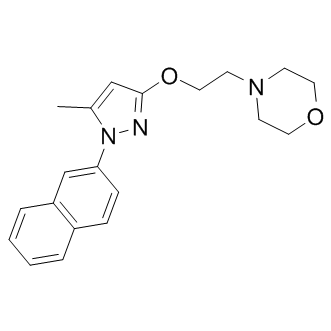 sexual lubricant. Since highquality carrageenan preparationsappear to have a good safety profile for long-term useand can inhibit HIV infections in model systems, clinical studies were conducted to validate the usefulness of carrageenanas a vaginal microbicide for the prevention of HIV-1 transmission. Reasons for the failure of these studies are manifold and approaches to improve the efficacy of such topical formulations are in the focus of current research. The antiviral potential of carrageenan and other sulphated polysaccharides in vitro against infections by several enveloped viruses such as herpes simplex virus, human cytomegalovirus, vesicular stomatitis virus, Sindbis virus, and human immunodeficiency virus has been described more than 20 years ago, and has been reviewed recently.
sexual lubricant. Since highquality carrageenan preparationsappear to have a good safety profile for long-term useand can inhibit HIV infections in model systems, clinical studies were conducted to validate the usefulness of carrageenanas a vaginal microbicide for the prevention of HIV-1 transmission. Reasons for the failure of these studies are manifold and approaches to improve the efficacy of such topical formulations are in the focus of current research. The antiviral potential of carrageenan and other sulphated polysaccharides in vitro against infections by several enveloped viruses such as herpes simplex virus, human cytomegalovirus, vesicular stomatitis virus, Sindbis virus, and human immunodeficiency virus has been described more than 20 years ago, and has been reviewed recently.
Combination targeted therapy with the present available inhibitors is to achieve survival benefit in clinical trials
This suggests a real challenge for targeted therapy of GBM where very few drugs can reach effective intra-tumor concentrations. Despite the difficulties of developing drugs for direct delivery either by polymer wafer or convention enhanced delivery. Our results are consistent with previous evidence that EGFR inhibition might be beneficial in a subset of patients, but we favor a combination approach based on our in vitro results. This conclusion is based on the fact that only combined inhibition was best at inhibiting signaling in all key pathways. Clinical trials with EGFR inhibitors in GBM have had only modest benefit at best even when accounting for EGFR pathway biomarkers. Recently mathematical modeling of EGFR inhibition in metastatic colon cancer suggests that the likely number of preexisting resistance mutations make it virtually impossible for a single targeting agent to prevent tumor re-growth. Overall, effort might be better used to identify better combinations. Although our best in vitro combination failed to improve over single agent in vivo, the results are informative. We conclude that a combination could include gefitinib, in particular if can be used at higher doses than used currently in the clinic. A kinase inhibitor targeting PDGFRA and/or FGFR or other frequently activated tyrosine kinases that can reach effective intra-tumor concentrations before dose limiting toxicity is a likely candidate for a combination with an EGFR inhibitor for a potentially more effective therapy. Enhanced delivery systems to intracranial tumors may be 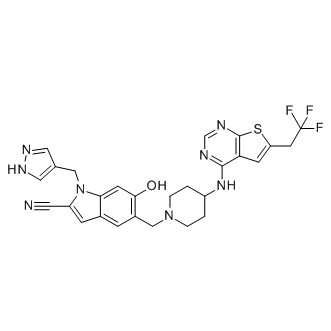 necessary as part of a successful strategy. Histone acetylation and deacetylation are key events in the regulation of chromatin structure. Histone acetyltransferasescatalyze the addition of acetyl groups to the e-amino terminus of lysine residues within histones. Acetylation results in an open chromatin structure by removing positive charges from histones, thus LY2157299 700874-72-2 inducing protein conformational changes, which allows transcriptional machinery to access the DNA and promote transcriptional activity. Histone deacetylasesoppose this process by promoting a closed chromatin structure, which is transcriptionally repressed. Furthermore, histone acetylation marks can function as docking sites for other proteins to interpret the ‘histone code’; for example, the tripartite motif containing 24was recently described as a ‘reader’ protein, which recognises both unmodified histone H3 at lysine 4 and histone H3 acetylated at lysine 23 on the same histone tail resulting in increased gene expression. In addition, non-histone proteins such as p53, ataxia telangiectasia mutated and androgen receptor can also be acetylated resulting in altered protein activity. Hence, protein acetylation and deacetylation can have significant effects on cell function, and for cells to maintain normal growth and differentiation it is important that these two functions maintain equilibrium. In support of this concept, HDAC inhibitors have been found to have wide ranging cellular effects and clinical activity in leukaemia, with Vorinostatbeing approved for clinical use in this disease. Modulation of histone acetylation clearly has therapeutic potential. Tip60, recently renamed KAT5, is a member of the MYST family of HAT enzymes first identified in 1996. Since then many cellular functions have been found to use this protein. Loss of Tip60 results in impaired DNA repair, as this HAT is activated in response to ionising radiation, causing acetylation of histones and FTY720 inquirer activation of p53 and ATM.
necessary as part of a successful strategy. Histone acetylation and deacetylation are key events in the regulation of chromatin structure. Histone acetyltransferasescatalyze the addition of acetyl groups to the e-amino terminus of lysine residues within histones. Acetylation results in an open chromatin structure by removing positive charges from histones, thus LY2157299 700874-72-2 inducing protein conformational changes, which allows transcriptional machinery to access the DNA and promote transcriptional activity. Histone deacetylasesoppose this process by promoting a closed chromatin structure, which is transcriptionally repressed. Furthermore, histone acetylation marks can function as docking sites for other proteins to interpret the ‘histone code’; for example, the tripartite motif containing 24was recently described as a ‘reader’ protein, which recognises both unmodified histone H3 at lysine 4 and histone H3 acetylated at lysine 23 on the same histone tail resulting in increased gene expression. In addition, non-histone proteins such as p53, ataxia telangiectasia mutated and androgen receptor can also be acetylated resulting in altered protein activity. Hence, protein acetylation and deacetylation can have significant effects on cell function, and for cells to maintain normal growth and differentiation it is important that these two functions maintain equilibrium. In support of this concept, HDAC inhibitors have been found to have wide ranging cellular effects and clinical activity in leukaemia, with Vorinostatbeing approved for clinical use in this disease. Modulation of histone acetylation clearly has therapeutic potential. Tip60, recently renamed KAT5, is a member of the MYST family of HAT enzymes first identified in 1996. Since then many cellular functions have been found to use this protein. Loss of Tip60 results in impaired DNA repair, as this HAT is activated in response to ionising radiation, causing acetylation of histones and FTY720 inquirer activation of p53 and ATM.
Support that a combination of a MEK inhibitor and a PI3Kinhibitor might be effective to double mutations
In addition to mutations, copy number gain of oncogenes is also important for “oncogene addiction”. We previously reported that extensive chromosomal instabilityis a poor independent prognostic factor in endometrial carcinomas. Although extensive chromosomal instability is more common in type II endometrial carcinomas, the percentage of extensive chromosomal instability was 31% in our clinical endometrioid adenocarcinoma samples. We found that both group D cell linesharbor extensive CNAs, with copy number gain at the locus of K-Ras, although they do not possess any mutations in K-Ras, PTEN and PIK3CA. The antiproliferative HhAntag691 effect of combined inhibition of MAPK pathway and PI3K/mTOR pathway in group D cells suggests that this combination therapy might be an option to treat tumors with CNA in K-Ras. The dual inhibition of the PI3K and MAPK pathways might overcome the resistance to PI3K/mTOR inhibition alone in certain endometrial tumors with K-Ras alterations through its enhanced cytostatic effect. Cheung et al reported that endometrial cell lines with wild-type PI3K pathway members were resistant to an mTOR inhibitor, rapamycin, suggesting that other unexamined factors, including CNA in K-Ras, might be involved in the anti-tumor effect of rapalogs. Phosphorylation of 4E-BP1 is not only regulated by 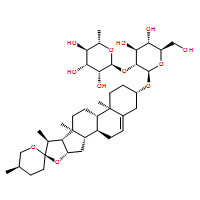 mTORC1, but also by ERK signaling, suggesting the crosstalk between PI3K/mTOR pathway and MAPK pathway. It would be necessary to evaluate the in vivo effect of the combined therapy in tumors with K-Ras alterations to address the activity of the MAPK pathway in endometrial cancer. Individuals with HIV infection are at increased risk for premature cardiovascular diseasedue to the higher prevalence of traditional risk factors, toxicity from antiretroviral therapy, as well as direct effects of HIV itself. Specifically, HIV-related inflammation persists despite effective viral suppression with ART treatment and this may further amplify CVD risk. CVD prevention strategies that encompass both antiinflammatory benefits as well as traditional risk factor modification may be uniquely beneficial in this context. Similar to the general population, high blood pressureand cholesterol account for a significant proportion of CVD risk among patients with HIV infection and remain a key component of prevention strategies. In the general population, epidemiologic data demonstrate a consistent graded relationship between BP and cholesterol with CVD, which persists through normal BP valuesand moderate total cholesterol levels. For a target population at higher absolute CVD risk, such as individuals with HIV infection, these data suggest risk factor reductions may be beneficial irrespective of whether individual BP or cholesterol levels exceed current thresholds for treatment. Angiotensin converting enzyme inhibitorsand HMGCoA reductase SB203580 distributor inhibitorshave been shown to reduce CVD risk through their BP and cholesterol lowering properties, respectively. However, both classes of medications appear to have additional anti-inflammatory pleotropic effects that may be uniquely beneficial for HIV positive patients. Prior to expanding the use of ACE-I and/or statins for HIV-infected persons to patients for whom these treatments are not currently indicated, safety and tolerability data are needed to inform largescale trials that more clearly define the net risk-benefit balance. The goal of this study was to determine if a strategy using lisinoprilat 10 mg daily and pravastatinat 20 mg daily as adjunctive treatment was feasible, well tolerated, and led to risk factor reductions when given alone or in combination to virologically suppressed patients receiving ART.
mTORC1, but also by ERK signaling, suggesting the crosstalk between PI3K/mTOR pathway and MAPK pathway. It would be necessary to evaluate the in vivo effect of the combined therapy in tumors with K-Ras alterations to address the activity of the MAPK pathway in endometrial cancer. Individuals with HIV infection are at increased risk for premature cardiovascular diseasedue to the higher prevalence of traditional risk factors, toxicity from antiretroviral therapy, as well as direct effects of HIV itself. Specifically, HIV-related inflammation persists despite effective viral suppression with ART treatment and this may further amplify CVD risk. CVD prevention strategies that encompass both antiinflammatory benefits as well as traditional risk factor modification may be uniquely beneficial in this context. Similar to the general population, high blood pressureand cholesterol account for a significant proportion of CVD risk among patients with HIV infection and remain a key component of prevention strategies. In the general population, epidemiologic data demonstrate a consistent graded relationship between BP and cholesterol with CVD, which persists through normal BP valuesand moderate total cholesterol levels. For a target population at higher absolute CVD risk, such as individuals with HIV infection, these data suggest risk factor reductions may be beneficial irrespective of whether individual BP or cholesterol levels exceed current thresholds for treatment. Angiotensin converting enzyme inhibitorsand HMGCoA reductase SB203580 distributor inhibitorshave been shown to reduce CVD risk through their BP and cholesterol lowering properties, respectively. However, both classes of medications appear to have additional anti-inflammatory pleotropic effects that may be uniquely beneficial for HIV positive patients. Prior to expanding the use of ACE-I and/or statins for HIV-infected persons to patients for whom these treatments are not currently indicated, safety and tolerability data are needed to inform largescale trials that more clearly define the net risk-benefit balance. The goal of this study was to determine if a strategy using lisinoprilat 10 mg daily and pravastatinat 20 mg daily as adjunctive treatment was feasible, well tolerated, and led to risk factor reductions when given alone or in combination to virologically suppressed patients receiving ART.